Szymanowski’s Stabat Mater
Szymanowski’s Stabat Mater
Although Szymanowski is best-known for his orchestral and chamber music, his contribution to vocal music was far from negligible. He wrote collected songs and several stage-works, notably his opera “King Roger”, while both the Third Symphony and the ballet “Harnasie” (Mountain Robbers) include a tenor solo and chorus. Towards the end of his life, he composed choral music on sacred topics, the two short cantatas “Veni Creator” and “Litany to the Virgin Mary.” Undoubtedly, however, his vocal-instrumental masterpiece is the Stabat Mater. Despite its modest size and forces, it is one of his most expressive and resonant works and is one of the glories of twentieth-century sacred music.
Karol Szymanowski – Stabat Mater
Szymanowski described his “Stabat Mater” as a ‘Peasant Requiem'. In fact, unlike the works Karol Szymanowski composed during the first two decades of the 20th century, his “Stabat Mater” could only have been written in a country with Slavic culture. Drawing on his musical roots and mother tongue, he wrote a transparent score for soloists, mixed choir and orchestra. It is all fascinatingly simple. The melodies consist of minor and major seconds and thirds and the pace of most movements is slow; only the second movement has a rhythm and melody that seem to pre-empt Orff’s Carmina Burana. It is a unique masterpiece of oratorio.
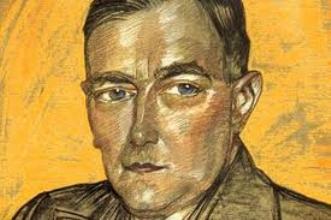
Karol Szymanowski
“Stabat Mater” was commissioned by the Warsaw patron of the arts, Dr Bronislaw Krystall. The piece was meant as a requiem dedicated to the memory of Krystall's prematurely deceased wife. However, the death of Szymanowski's niece Alusia made the composer decide to change the contract, and compose a Stabat Mater instead of a Requiem. Under the circumstances, the theme of the suffering and grief of the Mother of the crucified Jesus was closer to the composer's heart. The work was completed in 1926 and, in accordance with the contract, was dedicated "To the memory of Izabela Krystallowa".
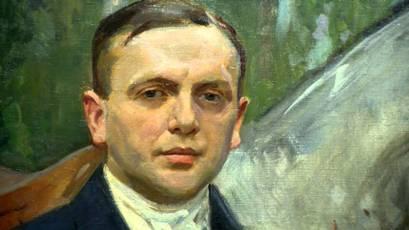
Bronislaw Krystall
The text Szymanowski used was Jozef Jankowski's Polish translation, ‘Stala matka bolejaca’, of the famous Mediaeval sequence 'Stabat Mater dolorosa', but outside Poland the work is sometimes performed with the original Latin lyrics. Although the 13th-century text is inherently dramatic, Janowski's translation is especially raw. Kornel Michałowski indicates the composer's initial attraction to the Polish translation was a result of its "unusually primitive, almost 'folk-like' simplicity and naivety."
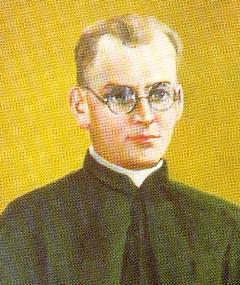
Jozef Jankowski
In the “Stabat Mater for soloists, choir and orchestra opus 53,” the composer created a Polish atmosphere by marrying popular elements with modern harmonic and tonal means’ but without ‘citing’ the music of the mountains, found in Zakopane which he made his permanent home in 1930, suffering from tuberculosis. Coinciding with his composition of Stabat Mater, was Szymanowski's study of early music – encompassing "pre-Palestrinian" and Palestrinian periods, as well as a study of old-Polish religious music. Devices used indicating this influence include: parallel movement between voices, modal pitch organization, and strongly patterned rhythms such as ostinati. Also incorporated into the work are melodic elements of two Polish Hymns: "Swiety Boze" [Holy God] and Gorzkie zale [Bitter Sorrows].
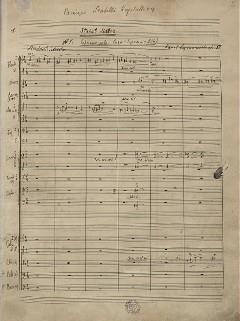
Szymanowski - Stabat Mater, autograf
The world premiere of Stabat Mater took place without the composer being present, as he was ill and staying at an Austrian sanatorium, on 11 January 1929 at the Warsaw Philharmonic, with soloists Stanisława Korwin-Szymanowska (the composer's sister), Halina Leska and Eugeniusz Mossakowski, conducted by Grzegorz Fitelberg. Many critics hailed the piece as Szymanowski's greatest work. The composer himself spoke of Stabat Mater as a work in which the expression of his creativity had fully crystallized.
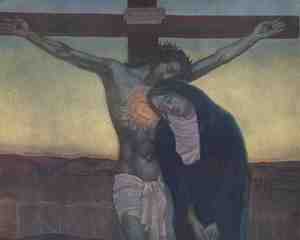
Stabat Mater Dolorosa
Tadeusz Zieliński wrote in his work 'Szymanowski. Liryka i ekstaza' / 'Szymanowski. Lyricism and Ecstasy':
„Stabat Mater occupies an important and special place in Szymanowski's output due to its great artistry achieved by a rather ruthless selection of means of expression. The music's huge emotional power reveals itself without any exuberant gesturing, spectacular sound arrangement, or mounting sophisticated chords. The deep, excruciating emotion seeks a direct outlet through simplicity - melody, harmony, texture, often even rhythmic pulse - and concentration. Striving for such an ideal, Szymanowski opted for archaization; work on the composition was preceded by his research into Renaissance music, especially Polish music. There is a clear trace of this in the work's harmonic language, in a fondness for triads (put together outside the classical convention), thirds alone and empty fifths, although archaic sound is mixed with contemporary, fresh combinations of sounds. An unusual economy of musical means and avoidance of flashy elements are prominent at first glance in the very modest picture of the score. However, and this needs emphasizing strongly, the external, sometimes ascetic austerity of the musical shape and means of expression combine beautifully with the internal warmth and delicate tenderness of the expressed content. It is probably this special, intriguing combination of apparent opposites - austere form and tender expression - that moves listeners easily, and means that audiences receive 'Stabat Mater' much more warmly than any other work by Szymanowski.”
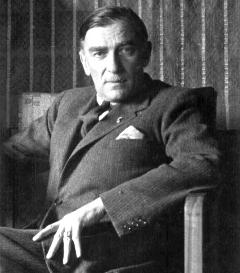
Karol Szymanowski
Jozef Janowski’s Polish translation of the famous Marian hymn Stabat Mater Dolorosa.
1. Stała Matka bolejąca (Stabat mater dolorosa) 2. I któż widział tak cierpiącą (Quis est homo qui non fleret) 3. O Matko Źródło Wszechmiłości (O, Eia, Mater, fons amoris) 4. Spraw niech płaczę z Tobą razem (Fac me tecum pie flere) 5. Panno słodka racz mozołem (Virgo virginum praeclara) 6. Chrystus niech mi będzie grodem (Christe, cum sit hinc exire)
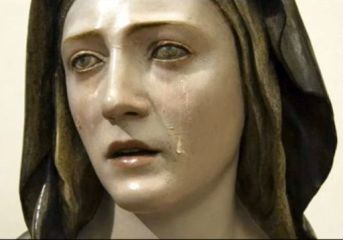
Stabat Mater Dolorosa
Szymanowski – Stabat Mater polish lyrics
1 Stala Matka bolejąca, Kolo krzyża łzy lejąca, Gdy na krzyżu wisiał Syn. A jaj duszę potyraną Rozpłakaną, poszarpaną Miecz przeszywał ludzkich win. O, jak smutna, jak podcięta Była Matka Boża święta, Cicha w załamaniu rąk! O, jak drżala I truchlała, I bolała,gdy patrzała Na synowskich tyle mąk. 2 I któż, widząc tak cierpiącą, Łzą nie zaćmi się gorącą, Nie drgnie, taki czując nóż? I kto serca nie ubroczy, Widząc, jak do krzyża oczy Wzbiła, z bólu drętwa już. Za ludzkiego rodu winy Jak katowan był jedyny, Męki każdy niołsa dział. I widziała, jak rodzony Jej umierał opuszczony, Zanim Bogu duszę dał. 3 Matko, źródło wszechmiłości, Daj mi uczuć moc żałości, Niechaj z Tobą dźwignę ból. Chrystusowe ukochanie Niech w mym sercu ogniem stanie, Krzyża dzieje we mnie wtul. Matko, Matko, miłosiernie Wejrzyj. Syna Twego ciernie W serce moje wraź jak w cel. Rodzonego, męczonego, Syna Twego oriarnego Kaźń owocną ze mną dziel. 4 Spraw, niech płaczę z Tobą razem, Krzyża zamknę się obrazem Aż po mój ostatni dech. Niechaj pod nim razem stoję, Dzielę Twoje krawe znoje. Twą boleścią zmywam grzech. 5 Panno słodka, racz, mozołem Niech me serce z Tobą społem Na golgocki idzie skłon. Niech śmierć przyjmę z katów ręki, Uczestnikiem będę męki, Razów krwawych zbiorę plon. Niechaj broczty ciało moje, Krzyżem niechaj się upoję, Niech z miłosnych żyję tchnień! W morzu ognia zapalony, Z Twojej ręki niech osłony Puklerz wezmę w sądu dzień!
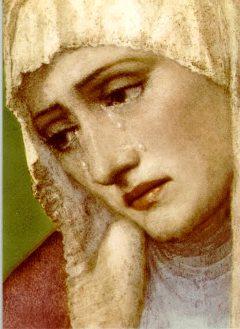
Stabat Mater Dolorosa
ENGLISH TRANSLATION
1 Mother, bowed with dreadful grief You must watch with slowly falling tears Your Son dying on the Cross! Through Your heart, pierced with sorrow, That cruel sword must be driven As it was foretold, oh Holy One! Oh! How sad and afflicted Was that Blessed Lady, Mother of the Only Begotten! She who saw with grief And contemplated the unending Anguish of Her Son! 2 Could anyone withhold their own tears Thus beholding Christ’s dear mother In woe unlike any other woe! Who would not feel grief For that kneeling Holy Mother – Suffering as noone else has? For every nation’s sins He suffered persecution, A prey to scourgers, as she saw: Saw her Jesus taken most foully, Forsaken by all, languishing, When he gave up his spirit. 3 Tender Mother, sweet fountain of love, Quickly soften my hard heart, Make me share Your pain: Kindle in me such burning zeal, Let such rich love flow to Jesus That I may be favoured. Holy Mother, I implore You, Crucify this heart before you – It is truly guilty! Hatred, mockery and scorn, Accusation, blindness, thirst, Give all these to me. 4 Under Your care, weeping, watching, Unsleeping beneath the Cross May I live and mourn for His sake: Kneeling with You close to Jesus, Feeling all Your pain with You, Oh! Grant me this, my prayer. 5 Immaculate maid most excellent, Peerless, dwelling in the highest heaven, Make me truly mourn with You; May my sighs help me bear his death, Ever reviving in me The anguish he suffered on my behalf: Bearing the same scars as His, Enflamed by the Cross, Elated to ecstatic love: Inspired and affected thus, Virgin, let me be protected When I am called in my turn.
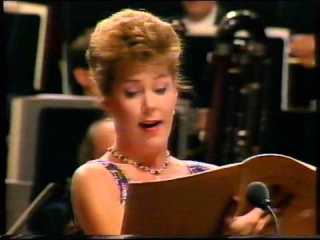
Szymanowski - Stabat Mater, Proms 1995
Last Updated (Tuesday, 15 March 2016 12:31)








